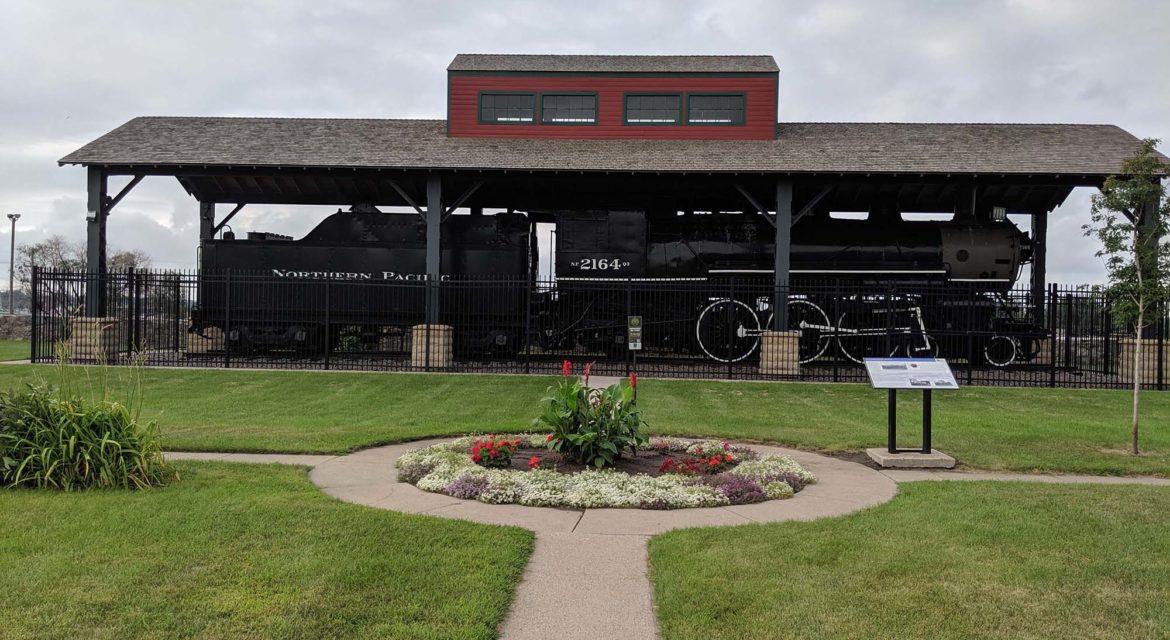 The Camp Hancock Historic Site contains numerous pieces of history that are significant to the community of Bismarck, North Dakota. The site contains an interpretive museum for artifacts and information about local history that have come to provide residents with a sense of identity while also giving visitors a reason to visit the area.
The Camp Hancock Historic Site contains numerous pieces of history that are significant to the community of Bismarck, North Dakota. The site contains an interpretive museum for artifacts and information about local history that have come to provide residents with a sense of identity while also giving visitors a reason to visit the area.
From a Garrison for Troops to a Historic Site for Bismarck
 Camp Hancock was commissioned on April 16, 1872 as a garrison for United States military troops. The purpose of the post was to protect supplies, equipment, and engineering crews of the Northern Pacific Railroad, as well as the citizens of Edwinton, which was renamed Bismarck in July 1873.
Camp Hancock was commissioned on April 16, 1872 as a garrison for United States military troops. The purpose of the post was to protect supplies, equipment, and engineering crews of the Northern Pacific Railroad, as well as the citizens of Edwinton, which was renamed Bismarck in July 1873.
The site consisted of an enlisted man’s barracks, two officers quarters, two quarters for married enlisted men, and a one-room guard house. In addition, there was quartermaster’s storehouse, a small stable, and a tented hospital. The site was eventually transferee over to the U.S. Department of Agriculture during which it housed the Bismarck Weather Station. In 1951 the site was deeded to the State of North Dakota with the North Dakota State Historical Society to serve as trustee.
Today, the Camp Hancock Historic Site features a museum housed in the Camp’s only original building, the Post Surgeon’s quarters which later became the Post Executive Officer’s quarters. This building was built in 1872 and is the oldest known building Bismarck. However, there are numerous pieces of history for visitors to see and experience at the Camp Hancock Historic Site.
Experiencing Pieces of Bismarck and North Dakota History
 The Camp Hancock Historic Site includes a 1909 Northern Pacific locomotive and the 1881 Church of the Bread of Life, known today as St. George’s Episcopal Church.
The Camp Hancock Historic Site includes a 1909 Northern Pacific locomotive and the 1881 Church of the Bread of Life, known today as St. George’s Episcopal Church.
Locomotive #2164 was originally used to power the North Coast Limited, the Northern Pacific’s premier transcontinental passenger train that ran from Chicago to Seattle. It was used in the operation of branch-line passenger and missed train service in North Dakota. After its last run in 1955, it was drained, cleaned and completely refurbished, with the intent that it would be displayed at the new Camp Hancock State Historical Site. It was dedicated on October 12th, 1955.
St. George’s was constructed in the winter of 1879-80 and was consecrated in 1881. After the 1949 construction of a new Episcopal church, called the St. George’s Episcopal Memorial Church, the original St. George’s was donated to the State Historical Society and was moved to its present location at Camp Hancock in 1961.
These pieces of Bismarck ad North Dakota history are in addition to the artifacts on display in the former U.S. Weather Bureau building, which contains a large amount of history from decades before North Dakota even became a state. It’s part of the reasons that Camp Hancock is listed on both the State Historic Sites Registry and on the National Register of Historic places.
Admission to the Camp Hancock Historic Site is free to allow anyone to connect with the history and legacy on display throughout the area. That connection to the past and present of Bismarck has enabled a powerful legacy for the site that is set to become that much more significant in the future.
The Past and Future of Bismarck
 While North Dakota boasts monuments that are as large as they are far-reaching, the Camp Hancock Historic Site represents something different. By highlighting the past of the city, Camp Hancock represents an important connection between that past with the future of the city that both residents and tourists can appreciate. In doing so, the the Camp Hancock Historic Site showcases what it can mean to create a legacy that is as much about the past as it is the future for an entire city and community.
While North Dakota boasts monuments that are as large as they are far-reaching, the Camp Hancock Historic Site represents something different. By highlighting the past of the city, Camp Hancock represents an important connection between that past with the future of the city that both residents and tourists can appreciate. In doing so, the the Camp Hancock Historic Site showcases what it can mean to create a legacy that is as much about the past as it is the future for an entire city and community.




